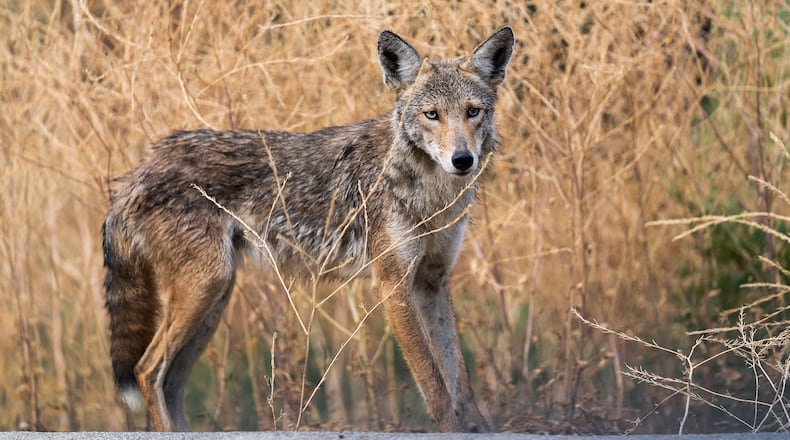“It’s getting worse,” he said at a recent city meeting. “From the sound of the howling, there could be as many as 10 to 15 coyotes.”
Surface said neighbors on his street have seen coyotes on his back patio during the day and others have seen coyotes at the Harmon Golf Course.
While small pets being attacked by coyotes is a concern, Surface said he’s also concerned about people taking a shot at the coyotes and and possibly hitting someone’s home or another person due to an errant shot or someone mishandling a weapon.
Lebanon Councilman Mike Cope agreed with Surface, adding that his home security camera captured an image of a coyote two weeks ago. City Manager Scott Brunka said the city has reached out to the Ohio Department of Natural Resources to discuss recommended options.
Lebanon is not the only area community that has seen coyotes in recent weeks.
Kettering police said Feb. 6 that they are “monitoring activity, working toward resolution and educating as many residents as possible.”
Kettering police also reminded residents that ”it is illegal to kill, poison, trap or relocate coyotes in the city of Kettering. We are seeing more wildlife during daylight in search of food and habitat. Please do not feed coyotes.”
The police notice said coyotes usually grow to between 25-35 pounds and normally feed on small mammals such as rabbits and mice. But they have been known to kill small dogs and cats as well.
“Please remain vigilant for the safety of your pets. It is not common for coyotes to attack humans, but as always, watch your children,” Kettering police said.
State wildlife officials said there is nothing to indicate an increase of the animals in the region.
Brett Beatty, a wildlife management supervisor at the Xenia office of ODNR’s Division of Wildlife, said the issue comes up periodically in the news.
Beatty said coyotes are more visible this time of year because it’s breeding season, and there are limited resources for food.
“They are more visible because the crops are down in fields as they’re feeding and taking care of themselves,” he said. “It’s just like deer in November.”
Beatty said coyotes have been documented in Ohio for more than a century and are present in rural, suburban and urban areas. He said coyotes are common in all of Ohio’s 88 counties even though they are not native to the Buckeye State.
There is no season or license required for hunting coyotes as long as a person is on their own property. If a person has permission to be on someone else’s property, they must have a hunting license, Beatty said. But that does not trump local laws regarding discharging firearms in the city.
Lebanon officials said it is illegal to discharge a firearm inside the city limits.
Beatty said coyotes are not typically aggressive, but they are territorial. Time of year can also play a role, such as mating season or protecting their pups around their dens.
ODNR says if there is a coyote on your property, remove all attractants to help deter it from returning, such as removing garbage and pet food before nightfall and cleaning up around the grill.
Coyotes are curious but generally fearful of humans. Clap your hands and shout to scare off coyotes that are investigating your yard. If the animal seems to lack a fear of humans or poses problems even after removing attractants, contact a nuisance trapper.
You can find a trapper near you by calling the ODNR’s Division of Wildlife at 1-800-WILDLIFE (945-3543) or visit www.wildohio.gov for more information.
About the Author


